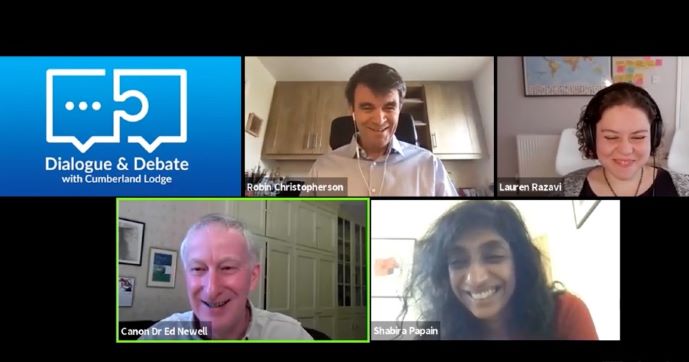The COVID-19 pandemic has forced a great deal of our professional and personal lives online. As countries across the world ‘locked down’ earlier this year in a bid to prevent further spread of the virus, we were confined to our homes, compelled to use digital technologies and the internet to work, socialise and access services.
The rapidity and all-encompassing character of this transition has served to highlight the increasingly essential nature of access to digital infrastructure. However, the pandemic has also accentuated a troubling inequality: the ‘digital divide’, or the gulf between those who can both access and use computers and the internet, and those who face obstacles in doing so.
Debating the digital divide
Before the global proliferation of COVID-19, Cumberland Lodge had already convened a two-day conference to explore means of tackling the digital divide, in November 2019, with the aim of supporting greater inclusion and opportunity for all.
This event was followed by a further consultation as the national COVID-19 lockdown began, in March 2020, and by the publication of a report on 5 August 2020, with, appropriately, a webinar to explore the topic in greater depth. The following provides a brief commentary on this webinar discussion on 5 August.
Cumberland Lodge Chief Executive, Canon Dr Edmund Newell, was joined by three guest panellists:
- Robin Christopherson MBE, Head of Digital Inclusion at the charity AbilityNet
- Shabira Papain, Head of Diversity, Inclusion and Reach at NHSx
- Lauren Razavi, a writer, speaker and strategist.
A wide-ranging conversation ensued. The panellists offered definitions of key terms, touched on their own experiences and struggles with digital technologies, remarked on the challenges and opportunities posed by the pandemic, and focused in particular on the interactions between social inequality (broadly defined) and a world that is increasingly dependent upon digital infrastructure.
Three calls for change
However, three ideas seemed, to me, to be particularly pertinent. Firstly, the speakers were united in the opinion that digital infrastructure must be co-designed with the communities it is intended to serve.
Moreover, creators must work particularly closely with those who are most likely to be ‘left behind’; indeed, as Christopherson remarked, doing so would render digital infrastructure more effective and user-friendly for all.
Secondly, both Papain and Razavi were adamant that broadband should be considered a basic utility, and that low-income groups must be provided with free access to WiFi.
Papain talked about ‘data poverty’, which she described as ‘a real issue’, particularly for those in temporary or insecure housing. She also highlighted the educational inequities that data poverty can provoke; as schooling transitioned online, children from the most economically deprived backgrounds were frequently unable to access any education. This served to exacerbate existing inequalities.
Razavi also argued that the internet should be both provided and regulated by governments, as opposed to private companies.
Thirdly, all three speakers commented on the explosion in home-working that we have witnessed during the pandemic. They highlighted the manner in which our personal and professional lives seem to have collapsed into one, the isolation and loneliness which so many have suffered, the frequent failure by employers to provide the equipment needed for workers to safely carry out their jobs from home and particular difficulties faced by certain groups in making this transition.
If working from home is to be an inclusive practice, there needs to be both practical and intellectual support for employees, and a sensitivity to the intersecting challenges that individuals may face in accessing digital infrastructure.
Perspectives for the future
Digital technologies were becoming increasingly pervasive in our lives, even prior to the COVID-19 pandemic. The extent to which the abrupt changes of the past six months are permanent is not yet clear; perhaps we will see a deeper valuing of offline experiences, a greater appreciation for ‘in-person’ interactions.
Nevertheless, both recognising and addressing digital divides are crucial in the 21st century, and the recommendations developed in the Cumberland Lodge Report, Digital Inclusion: Bridging Divides, written by Cumberland Lodge research associate Farah Elahi, provide a timely insight into how this might ultimately be achieved.


